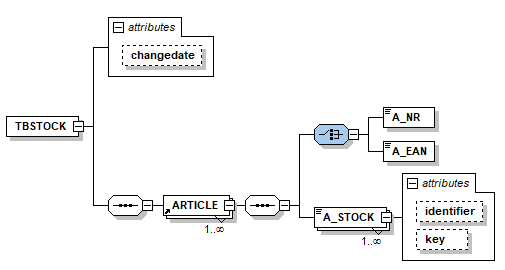Once all product and article data have been created, it is no longer necessary to send the entire product data catalogue just to update stock numbers. The transfer of entire product data catalogues may take a long time. Sending a stock feed is much faster and less error-prone. General requirements for the Data exchange via REST as well as a description of the file name for stock updates and the relevant XML scheme can be found here. The REST call for the stock updates is listed on the page "REST calls for channels and merchants".
The XML for stock data is structured as follows:
| |
|
|
|
| |
|
|
|
| |
|
|
|
| |
|
|
|
| |
|
|
|
| |
|
|
|
| |
|
|
|
| |
|
|
|
| |
|
|
|
Example XML
One central warehouse:
| |
Multiple warehouses:
| |

